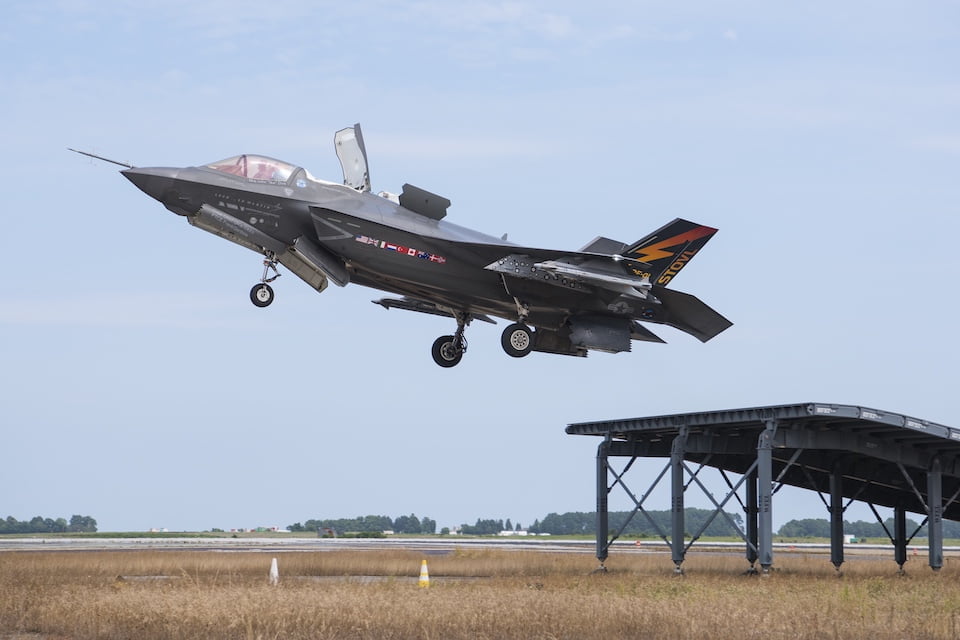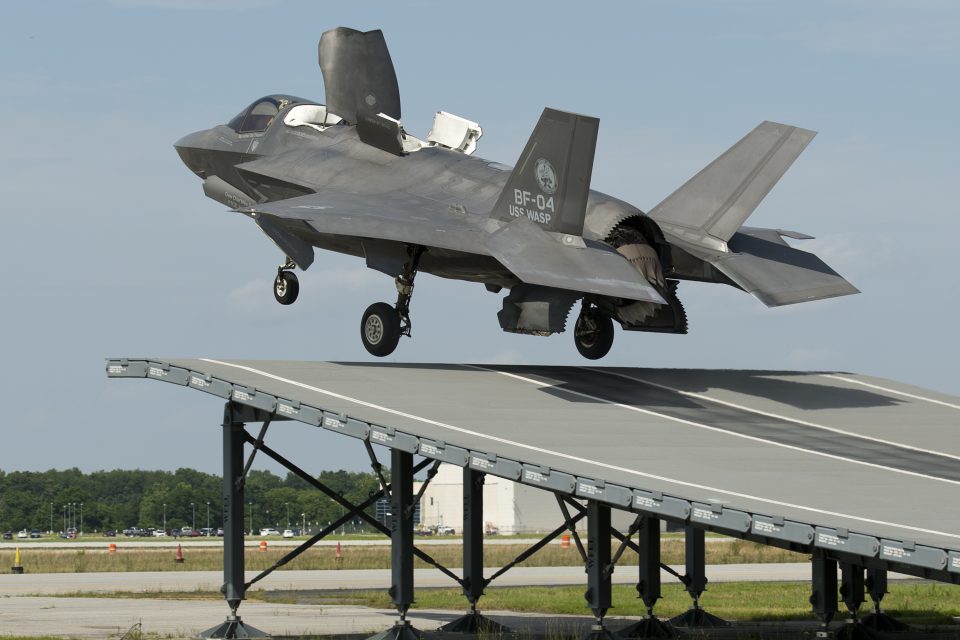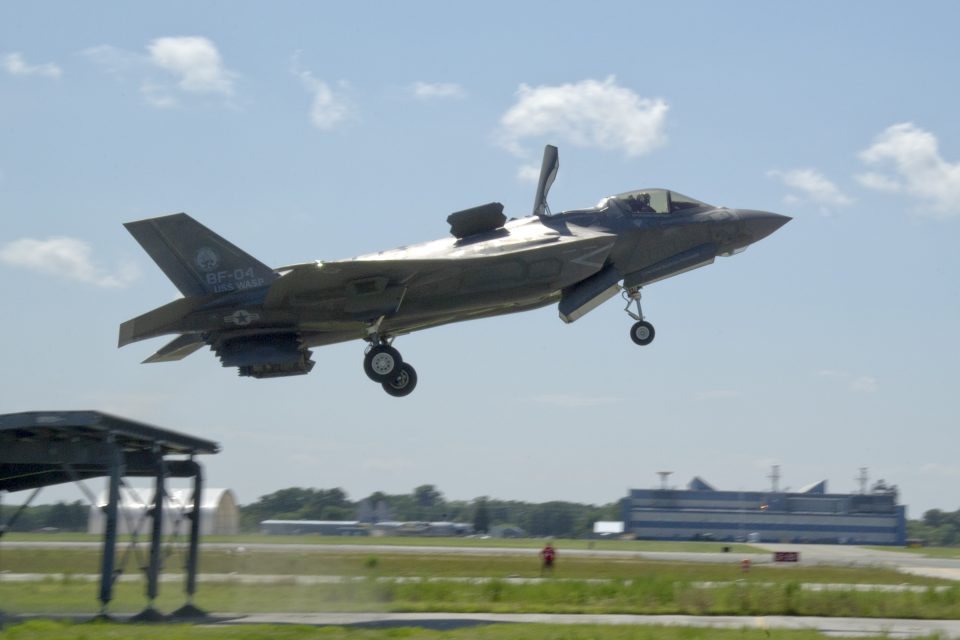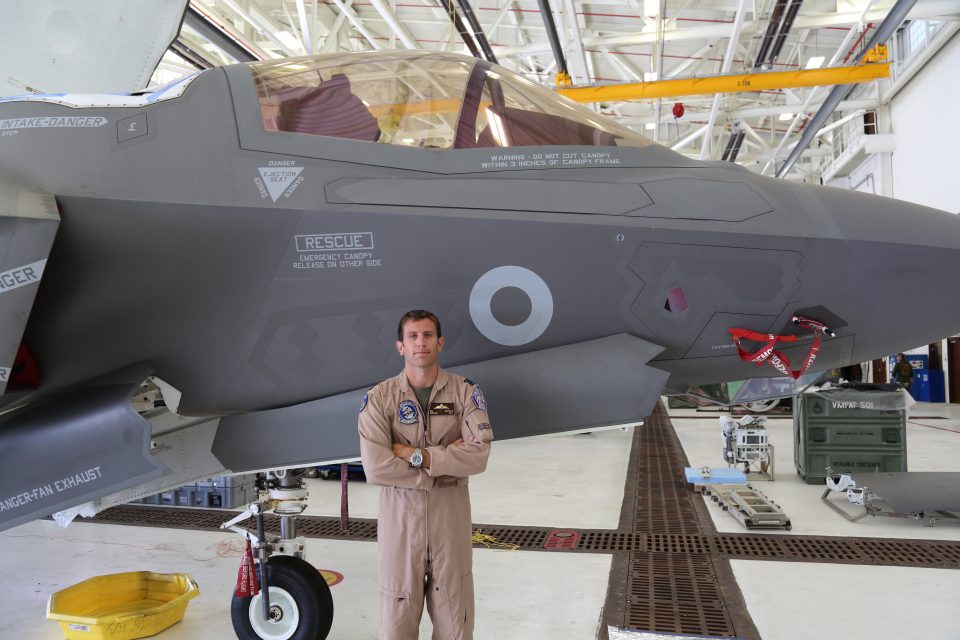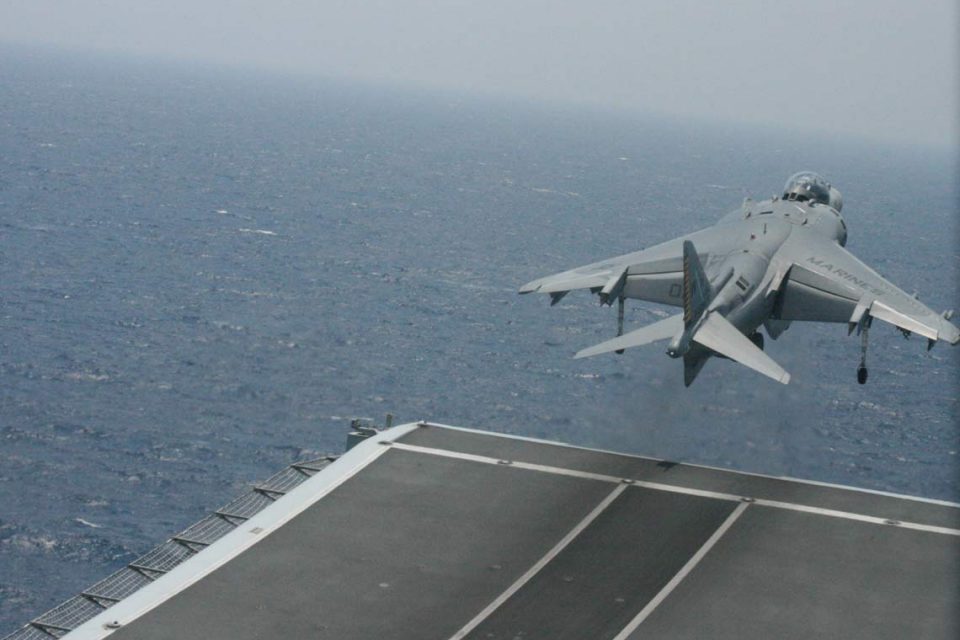2017-10-21 According to a story published October 17, 2017 on the UK Ministry of Defence website, after completing ski-jump exercises at Pax River, the F-35B has been cleared for takeoff from the new HMS Queen Elizabeth.
The UK’s cutting-edge F-35 fighter jet is now cleared for take-off from HMS Queen Elizabeth following successful trials using the ski-ramp design featured on the UK flagship, Defence Minister Harriett Baldwin announced at the House of Commons Defence Select Committee this afternoon.
Defence Minister Harriett Baldwin said:
“Successful ski-ramp trials mean the F-35 is cleared to fly from the carrier as the momentum continues for this game-changing jet. This milestone comes as our pilots and planes prepare to return from the States, ready for next year’s unforgettable flight trials from the deck of the nation’s new flagship.”
The UK currently has 12 F-35 jets out in the United States where they are being tested ahead of flight trials from the Royal Navy’s 65,000 tonne carrier, HMS Queen Elizabeth, next year. Two more aircraft are set to be delivered by the end of the year.
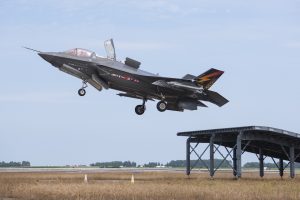 BF-1 Flt 675 piloted by Cdr Nathan Gray, ski jump testing with external pylons and AIM-9x from NAS Patuxent River, MD on 16 June 2017
BF-1 Flt 675 piloted by Cdr Nathan Gray, ski jump testing with external pylons and AIM-9x from NAS Patuxent River, MD on 16 June 2017
During today’s Select Committee session, the Defence Minister announced that the F-35 Integrated Test Force, which includes five British pilots, has now successfully completed ski ramp trials. That milestone clears the aircraft for take-off from the deck of the Carrier.
Speaking about the jet, Squadron Leader Andy Edgell, part of that Integrated Test Force, said:
“She’s marvellous. She has an incredible amount of thrust but it’s more than just brawn that makes her so fantastic to fly – it’s the brains behind her as well.
“She’s a masterful piece of engineering and it makes her so effortless to fly. It’s impossible not to be exhilarated every time. She’s a beast when you want her to be and tame when you need her to be. She’s beautiful.
“The launch of the F35s from the HMS Queen Elizabeth is a once in a generation historical event. To be the first to fly off the carrier, to have a front row seat, would be an absolute privilege. It wouldn’t just be about the pilot – there are hundreds of people who have been working tirelessly behind the scenes to make this happen and the honour will be theirs too.”
There are already 150 UK personnel out in the US working with the state-of-the-art jets, and today it has also been revealed that the latest course of UK pilots have just finished their ground school training and are now ready to fly the F-35B at Marine Corps Air Station Beaufort in South Carolina.
Amongst those to have graduated from that course are four pilots who started F-35 training straight from their advanced pilot training at RAF Valley, and Wing Commander John Butcher, who will be the Commanding Officer of the RAF’s new 617 squadron.
The new home of 617 squadron, RAF Marham, continues to build towards the arrival of the jets next year, moving a step closer earlier this month when the runway intersection resurfacing was completed. 617 Squadron will be the first operational British F-35 unit.
And elsewhere, just last week, the first F-35 flight with the latest software was conducted on one of the UK’s F-35Bs at Edwards Air Force Base in California. This software upgrade, technically known as Block 3F, represents the full warfighting capability the UK F-35s will have at Initial Operating Capability in December 2018.
UK industry will provide approximately 15% of the value of each F-35 to be built, more than 3,000, worth some £1 billon and generating around 25,000 British jobs. The programme remains on time, within costs and offers the best capability for our Armed Forces.
Editor’s Note: In a story published in 2015, we highlighted the role of ski jump testing in preparing for the launch of the new Queen Elizabeth class carriers.
2015-06-24 The ski jump is a feature on UK warships which have operated the Harrier and will operate the F-35B.
The joint UK-US test team at Pax River has recently completed the first test of the ski jump for the F-35B.
In the photos below, there are three shots of the ski jump as used by the British.
The first shows it in use during USMC harrier certifications in 2007 aboard the HMS Illustrious, which also saw the first landing on a foreign warship of the Osprey.
The second shows the ski jump aboard the HMS Queen Elizabeth.
The third shows the first launch of the F-35B off of a ski jump at the Pax River test facility.
The fourth photo shows the F-35B taking off from the USS Wasp without a ski jump.
The ski jump provides an advantage for launching with more weight and with less-end speed.
The fifth photo shows an RAF F-35B at MCAS Beaufort with Squadron Leader Hugh Nichols.
The F-35 is generated by and will be supported by a global enterprise.
For the British, the immediate advantage of this is to be able to leverage US-located facilities as their own are built over the next three years in the United Kingdom.
This means that the UK F-35Bs can be deployed about the HMS Queen Elizabeth fully capable in 2018 rather than having to start at that point, which is when infrastructure has been put in place in the UK for operations.
The Public Affairs Officer for the Joint Program Office provided his assessment of the test in the following story.
PATUXENT RIVER, Md. – An F-35B Lightning II completed the first ramp-assisted short take off to test the aircraft’s compatibility with British and Italian aircraft carriers.
“This test was a success for the joint ski jump team,” said Peter Wilson, BAE Systems F-35 test pilot and U.K. citizen, who flew the June 19 mission at Naval Air Station Patuxent River, Maryland.
“The aircraft performed well and I can’t wait until we’re conducting F-35 ski jumps from the deck of the Queen Elizabeth carrier.”
Two F-35 partner nations use ramp-assisted short take offs for their carrier operations as an alternative to the catapults and arresting gear used aboard longer U.S. aircraft carriers.
The shorter U.K. and Italian carriers feature an upward-sloped ramp at the bow of the ship.
Curved at its leading edge, a ski-jump ramp simultaneously launches aircraft upward and forward, allowing aircraft to take off with more weight and less end-speed than required for an unassisted horizontal launch aboard U.S. aircraft carriers.
The F-35B’s design allows it to automatically position the control surfaces and nozzles for takeoff – a unique capability compared with previous short takeoff and vertical landing aircraft.
Such automation frees up pilot capacity and provides an added safety enhancement.
“The control laws on the F-35B are designed to make the task of taking off and landing at the ship much easier than for previous STOVL aircraft,” said Gordon Stewart, flying qualities engineer representing the UK Ministry of Defence.
“For ski jump launches, the aircraft recognizes when it is on the ramp and responds by positioning the control surfaces and nozzles automatically for takeoff and climb.
This was our first chance to demonstrate these new control laws using a land-based ski jump.
We’ll be using these results — along with those from future testing — to help us prepare for the first shipboard ski jump launch from HMS Queen Elizabeth.”
The work on the F-35B at Pax River is being performed by a joint US-UK test team.
The joint U.S.-U.K. test team will conduct phase I testing this summer.
F-35 Lighting II Pax River ITF
6/19/15
F-35B Ski Jump Tests from SldInfo.com on Vimeo.
The Spanish also operate a ski jump aboard their ships and are a very likely future user of F-35Bs.
Photo One: Second Line of Defense
Photo Two: The Royal Navy
Photo Three: Pax River
Photo Four: USN
Photo Five: Second Line of Defense
And the F-35B could be coming to the Canberra-class ships for Australia as well.
http://navalinstitute.com.au/f-35-strike-fighters-from-the-canberra-class/
F-35 strike fighters for the Canberra-class? | Australian Naval Institute
http://www.aspistrategist.org.au/the-lhds-and-the-rotor-wing-option-a-pilots-response/
These links were provided by Rob Henderson and the Second Line of Defense team thanks him.


